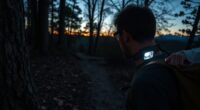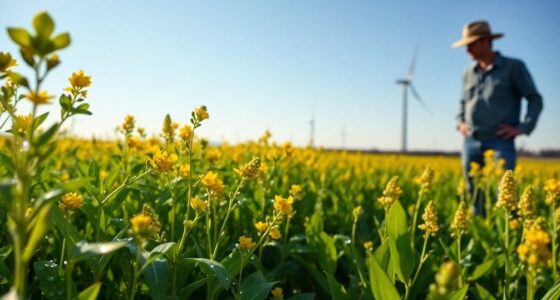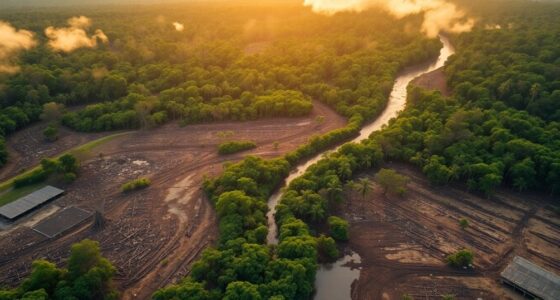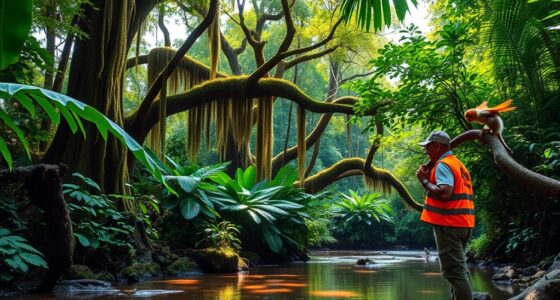Imagine dedicating your life to saving species on the brink of extinction, facing daily battles against poaching, habitat destruction, and climate change. As a wildlife conservationist, your work is demanding, often emotional, and filled with tough choices. But behind the scenes, innovative strategies and cutting-edge technology are making a difference. Curious about how these efforts come together and the real stories behind them? There’s more to this fight than meets the eye.
The Role and Responsibilities of Wildlife Conservationists
Wildlife conservationists play a crucial role in protecting endangered species and preserving natural habitats. You actively monitor animal populations, gather vital data, and track their health and numbers. Your work involves identifying threats like poaching, habitat destruction, and pollution, then developing strategies to combat them. You collaborate with local communities, governments, and organizations to promote sustainable practices and enforce wildlife laws. Education is also key; you raise awareness about the importance of biodiversity and how each species contributes to the ecosystem. Your responsibilities extend to restoring habitats, establishing protected areas, and implementing conservation programs. Every effort you make helps ensure that vulnerable species have a fighting chance for survival, safeguarding our planet’s natural heritage for future generations. Recognizing the benefits of Glycolic Acid in skincare, some conservationists even explore its potential applications in protective products for wildlife workers exposed to harsh environmental conditions.
Challenges Faced in Protecting Endangered Species
Protecting endangered species often feels like an uphill battle because numerous threats continuously undermine conservation efforts. Habitat destruction from agriculture, urban development, and deforestation shrinks their living spaces and isolates populations.
Poaching and illegal wildlife trade push species toward extinction, fueled by demand for animal products. Climate change alters ecosystems, making environments uninhabitable or disrupting migration patterns.
Limited funding and resources hinder your ability to implement effective solutions, forcing tough decisions and prioritizations. Local communities may oppose conservation initiatives if they threaten livelihoods or access to land.
Political instability and corruption can also impede enforcement of laws. All these factors combine to challenge your work, demanding resilience, adaptability, and creative problem-solving to overcome obstacles and protect vulnerable species. Conservation strategies are essential to address these complex challenges and ensure the survival of endangered species.
Innovative Strategies and Technologies in Conservation Efforts
Advancements in technology are transforming conservation efforts, offering innovative tools to monitor, protect, and restore endangered species. You can now use drones to survey remote habitats, capturing high-resolution images that reveal poaching activities or habitat degradation in real time.
GPS collars and bio-logging devices help track animal movements, giving you detailed insights into migration patterns and habitat use.
Satellite imagery allows for broad-scale habitat monitoring, detecting deforestation or encroachment quickly.
AI and machine learning analyze vast data sets, identifying threats and predicting future risks.
Additionally, DNA analysis helps identify poached or illegally traded species, strengthening law enforcement.
These cutting-edge strategies empower you to make more informed decisions, target interventions precisely, and ultimately, improve conservation outcomes for endangered wildlife. Sound design techniques can also be employed to create compelling audio narratives that raise awareness and foster emotional connections with the public.
Success Stories and Conservation Triumphs
Throughout recent years, conservation efforts have yielded remarkable successes that demonstrate the power of innovative strategies and dedicated action. You’ve seen endangered species like the black-footed ferret bounce back from the brink of extinction thanks to captive breeding programs. Community-led initiatives have helped protect vital habitats, stabilizing populations of elephants and tigers. Protected areas and wildlife corridors now connect fragmented habitats, allowing animals to roam freely and reproduce. Laws and policies have strengthened, leading to reduced poaching and illegal trade. These victories prove that targeted efforts and collaboration can turn the tide. Additionally, local legal resources have played a crucial role in establishing protected areas and enforcing wildlife protection laws. Your support and awareness contribute to these triumphs, inspiring more conservation projects worldwide. Together, these successes showcase what determined conservationists can achieve for the future of our planet’s most vulnerable species.
The Emotional and Physical Toll of Conservation Work
Conservation work can take a heavy emotional and physical toll on those involved, often stretching volunteers and professionals to their limits. You might face heartbreaking sights, like injured animals or habitats destroyed by human activity, which can lead to feelings of frustration, helplessness, or grief.
A variety of materials and support solutions, such as comfort and support solutions, can help conservationists manage physical discomfort and emotional stress more effectively. Physically, long hours in challenging conditions—hot sun, rough terrain, or remote locations—drain your energy and test your resilience. The constant pressure to save species and ecosystems can cause burnout and emotional fatigue.
You may feel isolated or overwhelmed, especially when progress seems slow or setbacks occur. Despite these hardships, your dedication persists because of the profound passion for protecting wildlife, knowing that your effort is vital for ensuring their survival.
How You Can Support Wildlife Preservation
Supporting wildlife preservation doesn’t require being a conservationist full-time; there are simple actions you can take to make a meaningful difference. Start by reducing your use of single-use plastics, which harm animals and pollute habitats.
Support organizations dedicated to wildlife protection through donations or volunteering. Educate yourself and others about endangered species and conservation issues, spreading awareness in your community.
Make sustainable choices by buying eco-friendly products and supporting companies that prioritize environmental responsibility. When traveling, respect local wildlife and habitats, avoiding activities that exploit animals.
Finally, advocate for stronger environmental policies by contacting your representatives and voting for conservation-minded leaders. Every small step adds up, helping preserve biodiversity and ensure future generations can enjoy the beauty of our natural world.
Conclusion
As you learn about wildlife conservation, remember your role in supporting these efforts. Conservationists face tough challenges and emotional moments, but their dedication makes a real difference. You can help by spreading awareness, donating, or volunteering. Every action counts in fighting extinction. Together, we can protect our planet’s biodiversity and ensure future generations get to enjoy a thriving, vibrant natural world. Your support truly matters in this vital mission.






